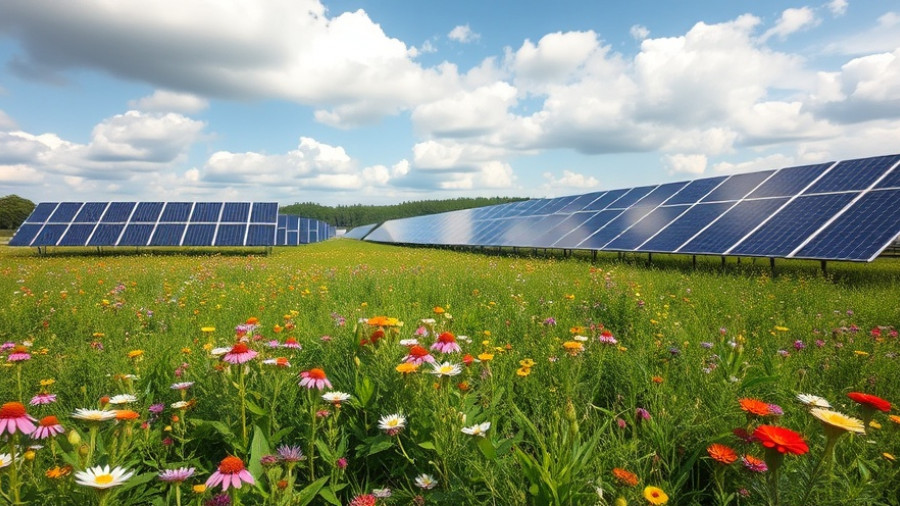
Why Soil Matters in Solar Development
As we pivot towards renewable energy, a fascinating transformation is taking place in the realm of solar developments. At the recent Solar Energy Industries Association (SEIA) conference in Savannah, Georgia, attendees explored an unexpected focal point: the health of the soil beneath solar panels. It's becoming increasingly evident that maintaining healthy soil is not just beneficial; it's essential for ensuring the long-term success and sustainability of solar projects.
Reimagining Landscapes: A New Purpose for Farmland
Picture a farm where solar panels rise amidst fields of vibrant wildflowers and native grasses. This idyllic scene, shared by soil scientist Christina Hebb, is gradually becoming a reality as solar developers recognize the ecological and economic benefits of integrating vegetation into their projects. Rich, thriving soil not only supports better pollination but also enhances the crops nearby, presenting a win-win for both solar energy and local agriculture.
The Agrivoltaics Revolution: Training New Practices
The concept of agrivoltaics, which involves combining agricultural practices with solar energy generation, is gaining traction. Farmers are discovering that solar farms can perform double duty, providing shade for crops while ensuring soil stability. For instance, researchers have found that crops grown under solar panels enjoy cooler temperatures and increased water retention, ultimately leading to greater yields and lower irrigation needs. Such results have been documented in various states, including Arizona and Colorado, where farmers have implemented this innovative approach.
A Grounded Approach: Building Soil Health for the Future
As solar developers expand their projects, they have the opportunity to adopt practices that safeguard and even enhance soil health. The American Farmland Trust recently introduced a Solar Soil Health Guide, filled with strategies to protect soil from the risks associated with solar development. With the right techniques, developers can transform soil from a liability into an invaluable asset, setting the stage for resilient land that supports both energy production and agricultural viability.
Innovative Solutions for Sustainable Energy
The focus on soil health is not merely theoretical; it's being put into practice across the country. For instance, some solar farms have introduced sheep grazing into their operations, creating an ecological balance that benefits both the livestock and the soil. This innovative approach promotes biodiversity while controlling weed growth, ensuring that maintenance crews can safely navigate the site.
Community Impact: The Ripple Effect of Healthy Soil
The implications of recognizing soil as a critical component of solar project viability extend beyond individual farms. When developers prioritize soil health, they ultimately help bolster local economies and the wider environment. This new perspective champions community resilience—by integrating agriculture and renewable energy, we can foster local economies that are less susceptible to market fluctuations and seek to root themselves in sustainability.
As the renewable energy landscape evolves, the relationship between solar developers and local farmers will only continue to strengthen. Through collaboration and shared goals, we can create energy solutions that nourish the land and benefit the communities that rely on it.
To learn more about creating sustainable solar projects that benefit both the environment and local communities, be part of the conversation and take action in your area. By advocating for policies and practices that integrate solar energy with agriculture, you can play a vital role in shaping a greener future for all.
 Add Row
Add Row  Add
Add 




Write A Comment